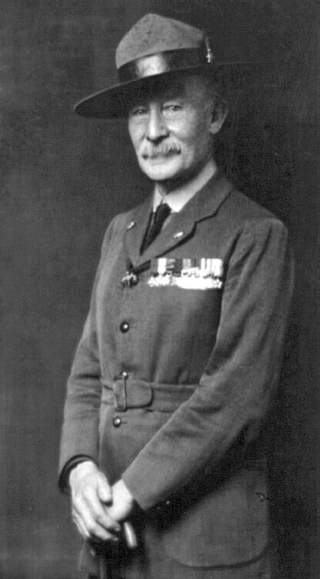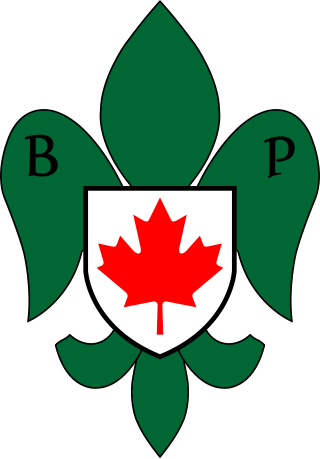
Scouting, also known as the Scout Movement, is a worldwide youth social movement employing the Scout method, a program of informal education with an emphasis on practical outdoor activities, including camping, woodcraft, aquatics, hiking, backpacking, and sports. Another widely recognized movement characteristic is the Scout uniform, by intent hiding all differences of social standing in a country and encouraging equality, with neckerchief and campaign hat or comparable headwear. Distinctive uniform insignia include the fleur-de-lis and the trefoil, as well as merit badges and other patches.

The World Organization of the Scout Movement is the largest international Scouting organization. WOSM has 174 members. These members are recognized national Scout organizations, which collectively have around 43 million participants. WOSM was established in 1922, and has its operational headquarters at Kuala Lumpur, Malaysia and its legal seat in Geneva, Switzerland. It is the counterpart of the World Association of Girl Guides and Girl Scouts (WAGGGS).

The World Association of Girl Guides and Girl Scouts is a global association supporting the female-oriented and female-only Guiding and Scouting organisations in 152 countries. It was established in 1928 in Parád, Hungary, and has its headquarters in London, United Kingdom. It is the counterpart of the World Organization of the Scout Movement (WOSM). WAGGGS is organised into five regions and operates five international Guiding centers. It holds full member status in the European Youth Forum (YFJ), which operates within the Council of Europe and European Union areas, and works closely with these bodies.

The three-finger salute is used by members of Scout and Guide organizations around the world when greeting other Scouts and in respect of a national flag at ceremonies. In most situations, the salute is made with the right hand, palm face out, the thumb holding down the little finger. There are some variations of the salute between national Scouting organizations and also within some programme sections.

Junák – český skaut, is the internationally recognized organization of Scouts and Guides of the Czech Republic. Founded in 1911, Junák – český skaut is the largest organisation of children and youth in the nation, with a membership of 73,315.

Slovenský skauting, is the primary national Scouting and Guiding organization of Slovakia. Currently has around 7000 members. With 3,157 Scouts and about 3,000 Guides. Slovenský Skauting is the largest youth organization in Slovakia and a member of both the World Organization of the Scout Movement and the World Association of Girl Guides and Girl Scouts.

Scouting Nederland is the national Scout organisation of the Netherlands with approximately 110,000 members (53,324 male and 54,663 female, 87,000 youth members, as of 2010.

The Kenya Scouts Association is the national Scouting association of Kenya. Scouting was founded in British East Africa in 1910 and became a member of the World Organization of the Scout Movement in 1964. It has 323,929 members.

Scouts de Argentina is one of the national Scouting associations of Argentina. Scouting was officially founded in Argentina in 1912, shortly after the publication of "Scouting For Boys" in Spanish, which was granted a National Charter in 1917, and was among the charter members of the World Organization of the Scout Movement in 1922. Scouts de Argentina has 75,000 members as of 2020.

Gidsen- en Scoutsbeweging in België (Dutch) or Guidisme et Scoutisme en Belgique (French) (GSB) is the national Guiding and Scouting federation in Belgium. Scouting in Belgium started in 1911, and Guiding followed in 1915. The Belgian Scouts were among the charter members of the World Organization of the Scout Movement (WOSM) in 1922, and the Guides were one of the founding members of the World Association of Girl Guides and Girl Scouts (WAGGGS) in 1928. The federation counts 121,600 Scouts and 59,268 Guides.

The Israel Boy and Girl Scouts Federation is Israel's federation of the five Scouting organizations in Israel, sorted by religious affiliation. Some 90,000 boys and girls belong to organizations in the federation.

The Scout method is the informal educational system used in the Scouting Movement. The aim of Scouting is character training with the goal of helping participants become independent and helpful, and thereby become "healthy, happy, helpful citizens".

Scouts' Day or Guides' Day is a generic term for special days observed by members of the Scouting movement throughout the year. Some of these days have religious significance, while others may be a simple celebration of Scouting. Typically, it is a day when all members of Scouting will re-affirm the Scout Promise.

The Fédération Nationale des Eclaireurs et Eclaireuses du Luxembourg is one of Luxembourg's Scouting and Guiding organizations. It is a member of the federation Scouting in Luxembourg.

Religion in Scouting and Guiding is an aspect of the Scout method that has been practiced differently and given different interpretations in different parts of the world over the years.
Non-aligned Scouting organizations is a term used by the World Organization of the Scout Movement (WOSM), World Association of Girl Guides and Girl Scouts (WAGGGS) and their member national organizations to refer to Scouting organizations that are not affiliated with them. See List of non-aligned Scouting organizations.

There are various controversies and conflicts that involve the Scouting movement. Scouting has sometimes become entangled in social controversies such as in nationalist resistance movements in India. Scouting was introduced to Africa by British officials as an instrument of colonial authority but became a subversive challenge to the legitimacy of British imperialism as Scouting fostered solidarity amongst African Scouts. There are also controversies and challenges within the Scout Movement itself such as current efforts to turn Scouts Canada into a democratic organization.
The Scout and Guide movement in Malta is served by three organizations:

The BPSA in Canada was established in Victoria, British Columbia in 1996 as The Baden-Powell Scouts' Association of Canada (B-PSAC), rejecting the perceived modernization of the Scout method by Scouts Canada and sharing its aims with the other branches of the B-PSA. It is affiliated with the World Federation of Independent Scouts. The association was incorporated in British Columbia in 2000.

Girl Guides is a worldwide movement, originally and largely still designed for girls and women only. The movement began in 1909, when girls requested to join the then-grassroots Boy Scout Movement.


















